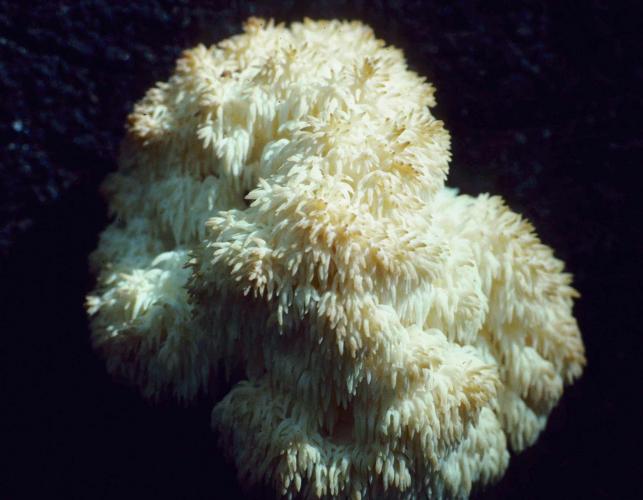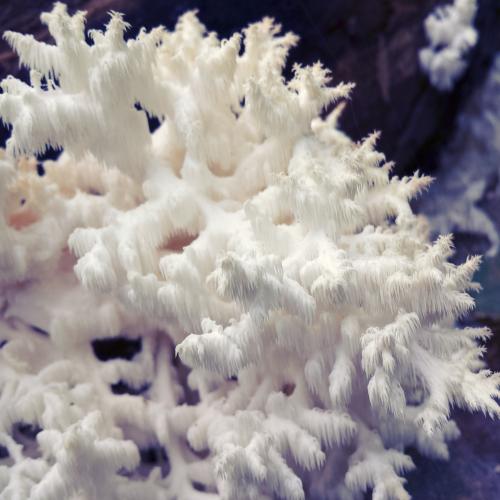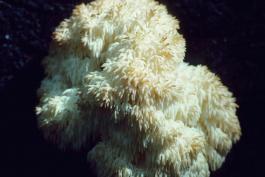
Branched, whitish mass on fallen logs and decaying deciduous trees. Branches covered with tufts of hanging, toothlike spines. August–October. Fruiting body an irregular mass with multiple branches; sides and undersurfaces of branches covered with tufts of hanging, toothlike spines, each spine ¼–½ inch long; white to creamy, becoming yellowish; texture coarsely toothed yet soft. Stalk short, thick, stublike, dividing into spine-covered branches; white to creamy, becoming yellowish; texture hairy. Spore print white. Spores magnified are almost round, smooth to roughened, colorless.
Lookalikes: Bearded tooth (H. erinaceus) is an unbranched, beardlike mass of long, hanging spines, and it fruits in wounds on living trees.
Fruiting body width: 4–10 inches; height: 3–6 inches.

Statewide.
Habitat and Conservation
Grows singly or in groups of up to several on fallen logs and decaying deciduous trees. Can reappear annually on the same spot for years. We tend to look only down when hunting for mushrooms. Try looking up–on the trunks of trees. Who knows what you might find!
Status
Considered a choice edible mushroom. The comb tooth is tasty only when young, fresh, and white. It gets sour and bitter as it matures and turns tan.
Life Cycle
This species lives as a network of cells (mycelium) within dead trees as a saprobe, and possibly in living trees as a parasite, digesting and decomposing the wood. When ready to reproduce, the mycelium develops the branching "fruiting body" that emerges from the wood—this is the reproductive structure. Spores are produced in the "teeth" and are released to begin new mycelia elsewhere.
Human Connections
When you are eating a wild mushroom for the first time, even one that is considered a "choice edible," it is a good idea to sample only a small amount at first, since some people are simply allergic to certain chemicals in certain fungi. Make sure they are cooked, too.
Ecosystem Connections
Fungi are vitally important for a healthy ecosystem. This fungus feeds off of dead or dying trees, decomposing them as they go. This cleans the forest and helps nutrients to cycle back into the soil — an unglamorous but vital role in the ecosystem.






Mushrooms are a lot like plants, but they lack chlorophyll and have to take nutrients from other materials. Mushrooms are neither plants nor animals. They are in a different kingdom — the fungi. Fungi include the familiar mushroom-forming species, plus the yeasts, molds, smuts, and rusts.
Always be cautious when eating edible mushrooms. Be absolutely sure of the ID, and only eat a small amount the first time you try it to avoid a reaction..





















